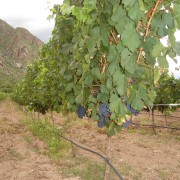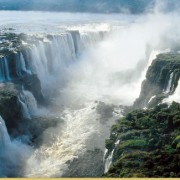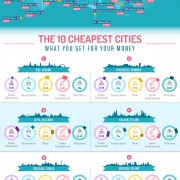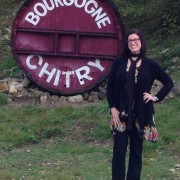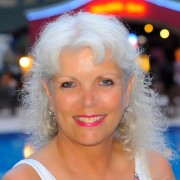What to Expect to See in Argentina in October 2016 with the EuroCircle Group
BUENOS AIRES
Quote from The Lonely Planet, Sandra Bao
“Sexy, alive and supremely confident, this beautiful city gets under your skin. Like Europe with a melancholic twist, Buenos Aires is unforgettable.”
It is a huge city – bigger than you expect. At 15.2 million, nearly 40% of Argentina`s population of more than 40 million lives in the greater Buenos Aires metropolitan area.
Porteños (Buenos Aires residents) are friendly – if you have a common language. Buenos Aires’ religion is football/soccer (just kidding) – and the best-known clubs are River Plate, Boca Juniors, Independiente, Racing Club and San Lorenzo. Names like Diego Maradona and Lionel Messi are familiar to many people who do not like sports.
POLO
It has been described as ‘making love in the vertical position’. The story is tango began in the bordellos of long-ago Buenos Aires, when men waiting for their ‘ladies’ passed time by dancing amongst themselves. Tango shows are entertaining with their athleticism. You’ll find endless venues for practice your moves, from salons to milongas (dance events) to cafes.
FOOD
Parrillas (steakhouses) sit on practically every corner and will offer up pretty much anything from bife de chorizo (sirloin) to vacio (flank steak) to ojo de bife (rib eye). This is not a vegetarian heaven but they have started adding more healthy choices. Pastas, pizzas and the delicious empanadas are also part of their Italian heritage. There are a lot of coffee places serving a selection of pastries and medialunas (croissants). Not to mention modern Andean cuisine and tantalizing tapas.
Ice cream is part of the Argentine culture and credits its existence to Italian immigration during the 19th century. The Italians brought with them: 1) gelato, and 2) the ice cream parlor, locally known as the heladería. Similar to the parrilla, there is an heladería on seemingly every corner in Buenos Aires. Over the years they have tinkered with recipes and created their own unique style of ice cream, the helado. Its thick yet light consistency falls somewhere between a traditional gelato and hard-frozen ice cream.
And the flavors… a common theme: plenty of chocolate and abundant dulce de leche (similar to caramel). The classics are chocolate con almendras (almonds), chocolate suiza (chocolate chip with dulce de leche), mousse de chocolate, chocolate amargo (bitter), dulce de leche con almendras and dulce de leche con brownie. Then there are fruits such as cherry, lemon, mango, melon, pineapple and strawberry.
When it comes to tipping, 10% of the amount of the dining check is usually left in cafes and restaurants. Doormen, porters, and ushers in cinemas and theatres are also generally tipped
SHOPPING
Palermo for hipsters and people who like for example Soho (NY style), Recoleta for the jet set/diplomates, San Telmo for bohemians and anyone who likes street markets. Palermo, Recoleta area has the greatest park area as well with The Botanical Garden right there – and close-by Polo field and the horse races.
HISTORY
Eva Perón (one of the photos is from the cemetery where she is buried) and Che Guevara are among the city’s unforgettable figures.
ART
Modern Art Paintings at the museums, colorful murals on walls throughout town.
Pickpocketing and mugging are fairly common, so avoid wearing flashy jewelry, be discreet with money and cameras, and be mindful of bags and wallets. Phone for taxis after dark.
Protests are a part of life in Buenos Aires. They are mostly peaceful, but some end in confrontations with the police since the country is known for corruption. They often take place in the Plaza de Mayo or along Avenida de Mayo.
The must see sights vary from person to person depending what you like: the average tourists like to see Plaza de Mayo, La Recoleta Cemetery, Mataderos (maybe),Teatro Colon, Cage Tortoni, Palermo, La Boca, San Telmo /San Telmo flea market, Puerto Madero and Obelisco. We really liked living in Palermo area close to the huge park area, we walked to see polo and horse races – we even walked to Recoleta from there.
We did not like that much the actual downtown area.
From Buenos Aires you’ll fly to Mendoza.
MENDOZA
Distance: 1,037 km (644 mi) from Buenos Aires (13 hours by bus) and 380 km (236 mi) from Santiago, Chile (6–7 hours by bus).
Mendoza is the capital city of Mendoza Province (in the northern-central part of the province, in a region of foothills and high plains, on the eastern side of the Andes). The region around Greater Mendoza is the largest wine producing area in Latin America. As such, Mendoza is one of nine cities worldwide in the network of Great Capitals of Wine, and the city is an emerging enotourism (Wine tourism) destination and base for exploring the region’s hundreds of wineries located along the Argentina Wine Route.
From Mendoza you will fly to Iguazu Falls.
IGUAZú FALLS
Distance to Buenos Aires: 1335 km
Your Iguazú Falls visit with other EuroCircle members will be a jaw-dropping experience. Picture the power and noise of the cascades – a chain of hundreds of waterfalls nearly 3km in extension – live forever in the memory. The Iguazú Falls falls lie split between Brazil and Argentina in a large expanse of national park, much of it rainforest. There is a lot unique flora and fauna.
The falls can be accessed from either side of the Argentine–Brazilian border, as well as from nearby Paraguay.
275 waterfalls that reach an altitude of almost 260 feet. They were declared one of the New Seven Wonders of Nature in the World and, also, Mankind Natural Heritage.
The entrance complex has a lot of amenities (lockers (AR$50), an ATM – you have to pay in cash in pesos – and a restaurant)
There’s also an exhibition essentially aimed at school groups. At the end there is a train station, from which a train runs every half-hour to the Cataratas train station, where the waterfall walks begin, and to the Garganta del Diablo. You may prefer to walk: it’s only 650m (1/3 of a mile) along the Sendero Verde path to the Cataratas station, and a further 2.3km to the Garganta, and you may well see capuchin monkeys along the way.
Login for the detailed itinerary in the Travel forum
Details or contact Sherry Kumar via email
After Iguazu Falls you can decide to extend your stay and see more of Argentina, go to Brazil, Uruguya, Paraguya…a lot to see no matter where you go!
















